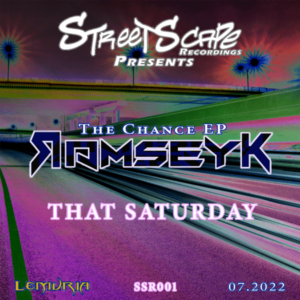Since the multi-million dollar sales of works by Grimes and Beeple kickstarted a tidal wave of mainstream interest in NFTs in 2021, the excitement has been palpable. Since then, NFTs have been adopted across the art world, in gaming, digital collectibles, and beyond. All in all, the NFT market is reportedly worth more than $27 billion – and yet, NFTs still face one major point of contention:
What do they really do? As in, what are they actually for? Why can’t I just save this JPEG onto my desktop? What’s the big deal?
NFTs & Physical Tangibility
I’d like to humbly suggest that this argument largely comes from a place of cognitive dissonance. Today, we live much of our lives online. We work online, play online, socialize online, do our taxes online, fall in love online, and oh-so much more. And yet, there remains a massive separation between what’s virtual and what’s “real”.
Simply put, most NFT assets on the market today exist almost purely within the metaverse; physical assets are, well, physical. Take NFT wearables. While some people are willing to pay thousands for a designer pair of digital sneakers, most of us — for better or for worse — scoff at the notion of expensive virtual clothing.
Therefore, in order to increase the usability and adoption of non-fungible token tech, we need to make NFTs more tangible for most people. The way to do that is to make them more practical. And how do we accomplish this, you may ask? With augmented reality (AR).
AR and NFTs Blend the Physical and Virtual Worlds
Indeed, when many people think of the so-called “metaverse,” they picture a fully-immersive, three-dimensional space. But the truth of the matter is much more flexible – the metaverse isn’t any specific place (physical or digital). Rather, it’s the point at which our lives are lived more online than not. By this definition, many of us are living in the metaverse already – we are beings that simultaneously exist in both physical and digital spaces.
AR perfectly reflects this kind of half-digital, half-physical way of operating in the world, and therefore, it’s the ideal tool for bringing NFT technology into the cultural and economic mainstream. In other words – by combining AR and NFTs, we can bridge the gap between the physical world and Web3.
Using AR to Enhance Physical Goods with NFTs
Take, for example, physical wearables that have an AR element.
When you were a kid, you may have imagined that the cool pair of new kicks you’d just bought had wings on the sides that enabled you to fly; maybe you pictured flames shooting out the back of them as you ran.
Together, NFTs and AR can make this possible: Say that a brand like Nike issues NFTs that give your sneakers special qualities when viewed in AR. Just like you imagined when you were a kid, the NFT could augment your shoes with an AR filter that produces virtual flames as you take your morning jog. When you get bored, you can sell the NFT to someone else.
And just imagine AR makeup. What if Kylie Jenner launches a series of AR filters along with her next makeup line: virtual lip fillers, eye colors, hairstyles, jewelry, and more. If you buy one, you ‘wear’ it for as long as you like in your Instagram and TikTok posts, and then – just like your Nike flames – sell it when you get bored.
NFTs and AR Can Make Self-Expression More Ethical and Accessible
The beauty of all of these kinds of AR-enhanced products is the creative variety that AR provides without damaging the environment.
Instead of buying many different variations of the same physical product (i.e. six differently-colored shirts, four pairs of shoes, or seven different palettes of eye makeup), you can simply purchase NFTs that allow you to change the appearance of your belongings with AR.
Because AR has almost no negative impact on the environment, you can have an unlimited wardrobe of colors, videos, and images that you can adjust in real-time. Imagine walking the street and being able to change your wardrobe based on your emotions, your environment, the weather and or day or night within minutes through AR.
The possibilities extend far beyond altering our personal appearances. AR and NFTs can be combined to enhance the experience of music, art, automotives, homes, and much more – the possibilities are literally endless. And while major brands may be some of the first to bring the combination of AR and NFTs to the mainstream, these tools aren’t just for use by major brands – independent creators in any field can use AR and NFTs to enhance their work. For example, Malawian-born artist Rannel Ngumuya creates T-shirts that are enhanced with an AR element using NFTs.


Bottom Line
The bottom line is this: AR is the tool that will bridge the gap between the traditional creator economy and Web3 – and NFTs are the key. Together, these two technologies are enabling entirely new kinds of creativity, branding collaborations, and much more. As more and more people spend their time in online spaces, these creations will bring entirely new audiences into Web3 – to stay.
Want more? Connect with NFT Plazas
Join the Weekly Newsletter
Join our Discord
Follow us on Twitter
Like us on Facebook
Follow us on Instagram
*All investment/financial opinions expressed by NFT Plazas are from the personal research and experience of our site moderators and are intended as educational material only. Individuals are required to fully research any product prior to making any kind of investment.

Natalia Diaz is the Founder and CEO of The Hunt, a creative marketplace designed to develop, display and sell NFTs and augmented reality products.




